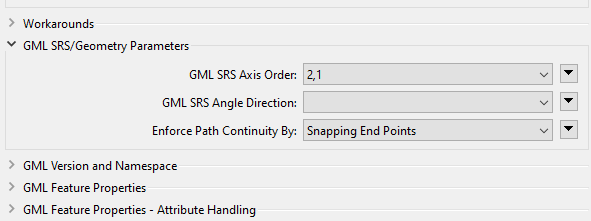I have a WFS that has over 500K features. I want to retrieve just those that intersect my area of interest.
If I have a polygon of my AOI and send it to a FeatureReader, with no spatial filter, then I get 30K features (or whatever the Max Features is set to on the WFS connection).
If I set the Spatial Filter to Bounding Boxes OGC-Intersect or Initiator OGC-Intersects results, I get the schema, but no actual features.
My aoi and the WFS data are in the same projection.
If I use a boundsExtractor and HTTPCaller and manually create the call, {redacted}/ows?service=wfs&version=2.0.0&request=GetFeature&typeNames={redacted}&bbox=@Value(_ymin),@Value(_xmin),@Value(_ymax),@Value(_xmax)
Then I get just the subset of features I'm interested in.
I would much rather use a FeatureReader. What am I missing to get a spatial constraint working?











